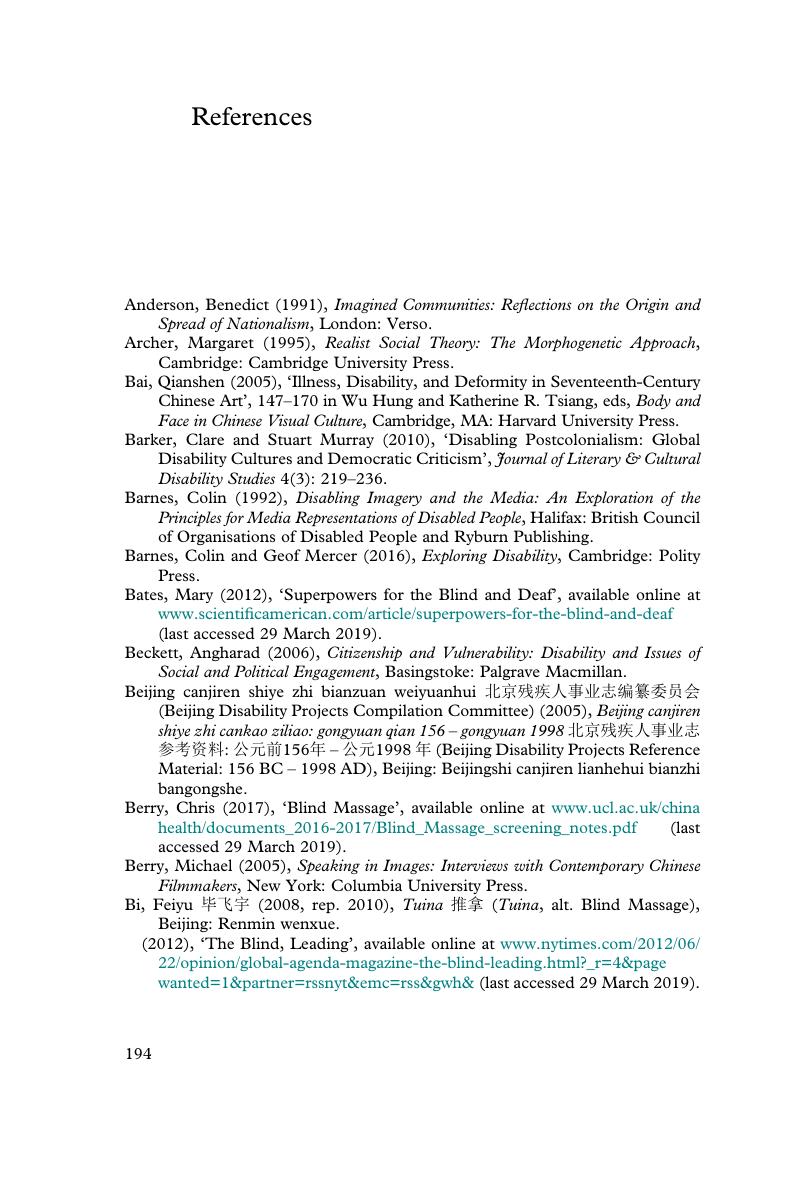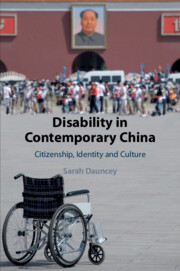Book contents
- Disability in Contemporary China
- Disability in Contemporary China
- Copyright page
- Dedication
- Contents
- Figures
- Acknowledgements
- A Note on Language
- Abbreviations
- Introduction
- 1 Where Did All the Disabled People Go?
- 2 Backstage to Centre Stage
- 3 Entertainment or Education?
- 4 A Narrative Prosthesis?
- 5 Blind, but Not in the Dark
- 6 Private Lives for Public Consumption
- Conclusion
- References
- Index
- References
References
Published online by Cambridge University Press: 18 September 2020
- Disability in Contemporary China
- Disability in Contemporary China
- Copyright page
- Dedication
- Contents
- Figures
- Acknowledgements
- A Note on Language
- Abbreviations
- Introduction
- 1 Where Did All the Disabled People Go?
- 2 Backstage to Centre Stage
- 3 Entertainment or Education?
- 4 A Narrative Prosthesis?
- 5 Blind, but Not in the Dark
- 6 Private Lives for Public Consumption
- Conclusion
- References
- Index
- References
Summary

- Type
- Chapter
- Information
- Disability in Contemporary ChinaCitizenship, Identity and Culture, pp. 194 - 217Publisher: Cambridge University PressPrint publication year: 2020



